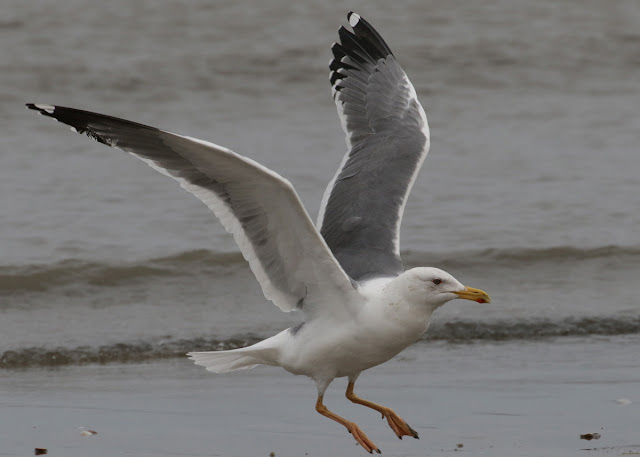I first heard of this Least Tern via the Kantori mailing list on Wednesday night, the following day someone else told me this is Japan's second record. He went on to say there was a Lesser Frigatebird performing well at a small harbour near Kobe. What to do? The Least Tern was a long, long way, and more importantly beyond my self-imposed twitching boundary; the end of Honshu to the west and Tokyo city limits to the east, a boundary I've never exceeded. On the other hand, it would be a lifer... a big hand, that. Good views of Lesser Frigatebird would be spectacular but I've seen hundreds overseas and even found two frigatebirds in Japan, neither of which I could put a name to because of distance.
The title of the post makes it pretty obvious I didn't choose the frigatebird, but I will say I've seen great overhead images taken by two people who did go for it. I left Kyoto at midnight Thursday and with a 40 minute nap 'n' coffee break en route I rolled into Choshi just after 8:30am. It felt weird as an avid guller to be making my first visit to Choshi in mid-summer.
There were about five people present when I arrived so I jumped out with just my bins to ask if it was there. They told me it was but not in view at that moment so I went to get my camera from the van, 20 metres away, and by the time I returned it had flown in.
I was expecting the call to be critical but, though distinct at times, it wasn't as ear-catching as I'd imagined. I probably wouldn't have noticed a 'strange' call if I hadn't been listening for it. On the plus side, or the useful side I should say, the rump and tail were far more obvious than I'd realised and this bird would stand out even as a casual fly-by.
Though apparently there is overlap in size between Little and Least this bird is very small and I'm sure it will be outside the range of Little. The legs always looked shorter than those of the Little Terns present and though this is unreliable as an identification feature, it's quite handy for picking this bird out when terns are perched on a level surface. In short it was easy to pick out even at long range in flight because of the dark rump and tail and after a while it was easy to pick out at rest too because of its slight build and small size even though there weren't any reliable ID features to work with.
I don't have any shots of it in direct comparison with Little. The following image is the closest I got but it's even more interesting from the behaviour aspect. This was one of two occasions I saw it present a fish to a Little Tern. I don't know whether it was to the same Little Tern but let's hope the Littles have the sense to do no more than accept the offerings. As a postscript: I've heard the ringed Little Tern the Least associates with is known to be male, and judging by behaviour so is the Least. Presumably there aren't any unpaired females in the small colony.
 |
| The Least flew in and has just handed over its hard earned fish, it isn't easy to see but the fish is now in the bill of a surprised Little Tern. |
I already mentioned the Least legs (of this bird) look short but they're also rather thin, those of the Little in the above image seem quite stout by comparison.
 |
| Little Tern: proportionately thicker legs look a better match for the bill. This bird has a long white extension from the forehead reaching behind the eye, this should be variable in both species and of no value as an identification feature, however this Least has a particularly short extension. |
Whether face-on or side-on this Least has spindly legs.
Easy as it was to pick out because of the grey rump and tail but flight shots showing this weren't so easy to get.
 |
| It had strikingly dark outer primaries as well as the grey rump. |
 |
| The white outer tail feathers are clear in this shot. |
 |
| Getting shots of the underparts was much easier but they don't help from an identification perspective. |
I always felt Emperor Goose and Spectacled Eider were the only two birds that could get me to breach my twitching boundary. But Least Tern! Maybe it's time to reassess the what and the how far.


















































